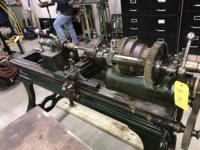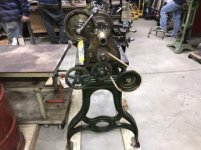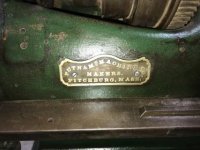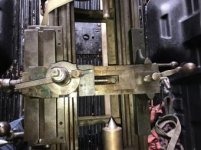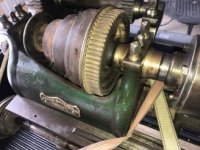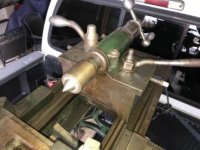Hit Miss Engine
Cast Iron
- Joined
- Dec 4, 2008
- Location
- PA. USA
I wanted to share a nice Putnam Lathe I picked up at Auction today... The lathe has what looks to be a lot of original paint and came with a face plate, steady rest, counter shaft and some tools but no change gears. The lathe is around 5 foot long. I will have to measure the swing once I get home and unloaded.




